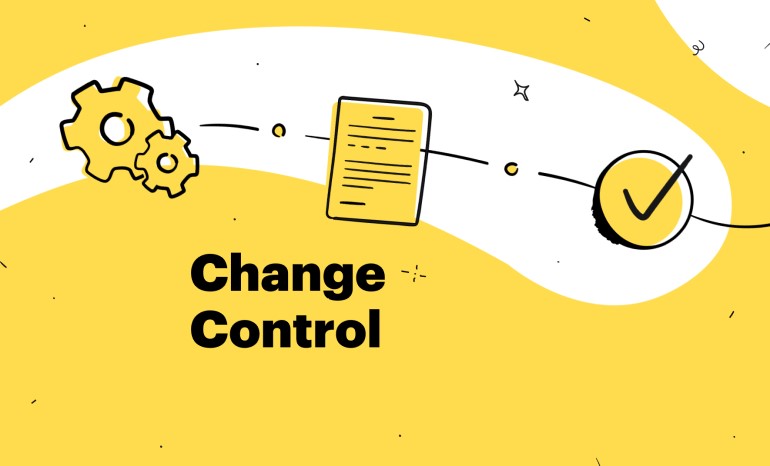In today’s dynamic business environment, change is inevitable. Whether it involves adopting new technologies, adjusting operational processes, or restructuring teams, businesses must constantly evolve to remain competitive. Developing a Change Control Policy is essential for managing these transitions effectively. A well-designed change control policy ensures that changes are carefully evaluated, approved, and implemented in a way that minimizes disruption while maximizing positive outcomes. By creating a formal process for managing change, organizations can maintain operational stability while embracing innovation.
When developing a change control policy, businesses need to define the processes that will guide decision-making, communication, and risk management throughout the implementation of change. This formalized approach ensures that all stakeholders are informed and that any potential risks are addressed before changes are introduced. Without a clear policy in place, organizations risk miscommunication, operational inefficiencies, and even financial loss.
Why a Change Control Policy Is Essential
The importance of developing a change control policy is critical, especially in industries where minor changes can significantly affect operations. A robust change control policy ensures that changes follow a structured process of evaluation and approval rather than being implemented haphazardly. This structured approach helps prevent disruptions, reduces errors, and ensures that changes align with the company’s overall goals.
By implementing a change control policy, companies also improve communication between departments. Change often involves multiple teams, each with its own priorities and workflows. Without a centralized change management process, teams may work in silos, leading to confusion and duplicated efforts. A well-designed policy promotes collaboration by ensuring that all stakeholders understand the proposed changes, their impact, and the necessary steps for implementation.
Additionally, a change control policy helps businesses mitigate risk. Every change, whether large or small, presents potential risks, such as disruptions to production, compliance issues, or financial costs. A change control policy provides a structured framework for assessing risks before changes are made. Requiring risk assessments as part of the process allows companies to identify potential issues early and develop strategies to minimize negative impacts.
Steps to Developing a Change Control Policy
Developing a change control policy requires a structured approach that gathers input from various departments across the organization. The first step involves defining the scope, identifying the types of changes subject to the policy, and setting criteria for initiating change requests. Changes that impact multiple departments, critical business functions, or significant financial investments should be included in the change control process.
Once you set the scope, establish a change control board (CCB) or committee to oversee the process. Typically, the CCB includes representatives from various departments, ensuring diverse perspectives when evaluating proposed changes. The board reviews change requests, assesses potential impacts, and recommends approval or rejection, ensuring transparency and comprehensive decision-making.
Communication is a key element when developing a change control policy. A successful policy defines how teams will communicate changes across the organization, specifying who notifies stakeholders, how updates are delivered, and what information is shared. Keeping relevant parties informed throughout the process prevents confusion and ensures smooth implementation.
Documentation is also essential in a change control policy. Document each step thoroughly, from the initial request to final approval. Clear records of the decision-making process help track change effectiveness. Comprehensive documentation also demonstrates adherence to the process in case of an audit or review.
Benefits of a Change Control Policy
There are numerous benefits to developing a change control policy, particularly when it comes to managing risk and improving operational efficiency. One of the primary advantages is the ability to track and manage changes in a systematic way. Without a formal policy, teams may introduce changes inconsistently, leading to confusion and potential errors. A structured policy ensures that every change follows the same process, reducing the likelihood of mistakes and ensuring accountability.
Another benefit is the ability to assess the impact of changes before implementation. Requiring a formal review process ensures careful consideration of each change’s potential consequences. This helps businesses avoid costly mistakes, minimize downtime, and ensure that changes support the company’s strategic objectives. Moreover, involving a cross-functional team in the decision-making process aligns all departments, reducing the risk of unintended consequences.
In addition, a change control policy helps businesses meet compliance requirements. Many industries, such as healthcare and finance, are subject to strict regulatory standards. Changes to systems, processes, or technologies can have legal and compliance implications. By incorporating compliance checks into the change control process, companies can ensure that all changes meet regulatory requirements and avoid fines or penalties.
Implementation Challenges
While developing a change control policy brings many benefits, businesses may face challenges during implementation. One common issue is resistance to change from employees or departments. Some may view the change control process as bureaucratic, slowing down innovation and decision-making. To overcome this resistance, businesses should emphasize the importance of the policy in managing risk and ensuring successful outcomes. Offering training on how to navigate the change control process can also help employees understand its value.
Another challenge is maintaining flexibility while adhering to the change control policy. In fast-paced industries, businesses may need to implement changes quickly to stay competitive. Balancing the need for a structured process with the ability to adapt to rapidly changing circumstances can be difficult. To address this, companies should incorporate mechanisms for handling emergency changes. This allows the team to fast-track critical changes while maintaining accountability and thorough documentation.
Finally, businesses must regularly update their change control policy to reflect new technologies, regulations, and business strategies. A policy that worked well a few years ago may no longer be effective in the current business environment. Regular reviews of the policy help ensure that it remains relevant and aligned with the company’s needs.
Conclusion
Developing a change control policy is a critical step for businesses looking to manage organizational change effectively. By establishing clear processes for evaluating, approving, and implementing changes, companies can minimize disruptions, reduce risk, and ensure that all changes support their long-term goals. A robust change control policy fosters collaboration, improves communication, and ensures accountability at every stage of the change process.
For businesses navigating today’s fast-paced market, having a well-defined change control policy is essential to maintaining operational efficiency while embracing innovation. With the right approach, businesses can successfully manage change, reduce risks, and achieve their strategic objectives.


